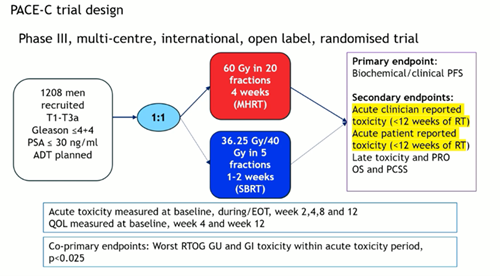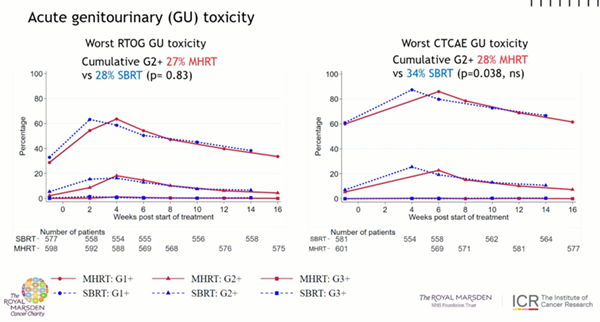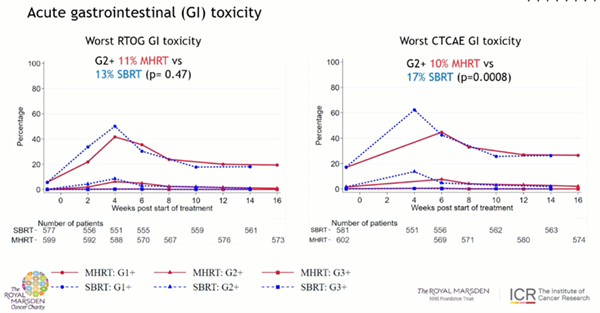ESTRO 2024 Congress Report
Moderate hypofractionation radiotherapy (MHRT), delivered over four to eight weeks, remains the standard of care for most men with curable prostate cancer. Five-fraction stereotactic body radiotherapy (SBRT) is non-inferior to MHRT for men with low- to intermédiate-risk prostate cancer in terms of biochemical control. The PACE-C trial is focused on unfavourable and limited high-risk prostate cancer, and compares the results of SBRT treatment with that of MHRT, with androgen deprivation therapy in both arms (Figure 1). The primary endpoint is biochemical and clinical progression-free survival. Dr Tree presented the acute toxicity results after 12 weeks of this trial.

Figure 1: PACE-C trial design
The higher-risk features of the cáncers under study mark out PACE-C as clearly different from PACE-B. Around 35% of the cancers are classified as high risk, and around 28% of patients have T3a disease on MRI (Table 1). On the technical side, it is interesting to note that in the SBRT arm, only 45% of patients have fiducials, with 84% of patients being treated on a conventional Linac.
Table 1: Patient characteristics

There was no difference in acute genitourinary (GU) or gastrointestinal (GI) toxicity between MHRT and SBRT when measured on the Radiation Therapy Oncology Group (RTOG) scale (Figure 2). However, the incidence of both acute GU (28% vs. 34%) and GI (10% vs. 17%) toxicity was higher with the use of SBRT when the more sensitive common terminology criteria for adverse events (CTCAE) scale was used. No differences were seen in grade 3 or higher toxicities. These differences were also picked up in the quality-of-life questionnaire, as those who had undergone SBRT reported worse quality of life in terms of irritation or obstruction of urinary or bowel functions. It is important to note that baseline voiding symptoms are related to a higher incidence of GU complaints during follow-up.
These results are encouraging, as the acute toxicity rates that were reported were comparable to those in the PACE-B trial, despite the larger prostate volume that is under treatment in PACE-C.


References:
Proffered Paper Presented by Tree A.: Acute toxicity from PACE-C, comparing stereotactic body radiotherapy (SBRT) with moderate hypofractionation (MHRT). Radiother and Oncol. Supplement 1, May 2024
Brand H et al. Intensity-modulated fractionated radiotherapy versus stereotactic body radiotherapy for prostate cancer (PACE-B): acute toxicity findings from an international, randomised, open-label, phase 3, non-inferiority trial. Lancet Oncol. 2019 Nov;20(11):1531-1543

Professor Dr Piet Ost
Department of Radiation Oncology
Iridium Network, Antwerp, Belgium
Department of Human Structure and Repair
Ghent University, Ghent, Belgium